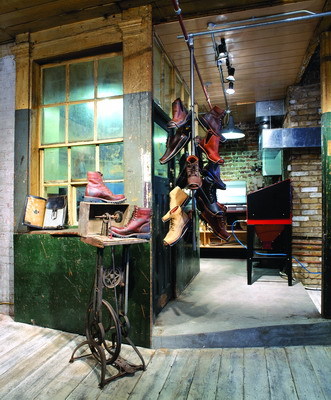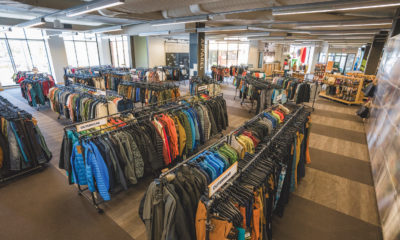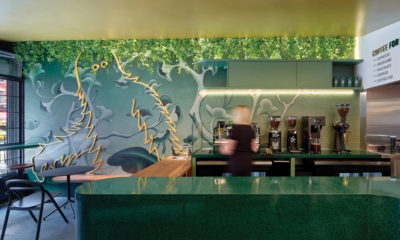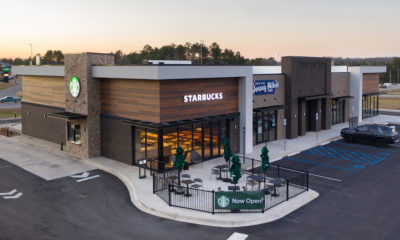I’m convinced that Kermit the Frog was ahead of his time. Years ago, he sang that unforgettable song about how hard it is to be green. Today, however, it seems like everybody and everything is going green. It has become trendy to be environmentally conscious in all areas of life, including display design.
Green design has been defined in many ways, but what it breaks down to is this: producing something in a way that minimizes its negative effect on the environment and increases its positive one.
As much as companies want environmentally friendly displays, many don’t have budgets that can accommodate the extra costs of “green” materials. While it’s true that material selection is a part of the process, going green goes beyond that. Many activities have little or no extra cost and some may actually save you money. All a business needs to remember is that old adage: “reduce, reuse and recycle.”
Reduce
One way to reduce is to minimize the use of environmentally harmful materials, including non-renewable resources. Sustainable materials, such as hemp and bamboo, can be cultivated in a relatively short period of time, providing a seemingly endless supply of materials.
You can also minimize the use of toxic materials. Many types of materials produce volatile organic compounds (or VOCs) that, when combined with nitrogen oxides and sunlight, produce ozone. VOCs are commonly found in materials that have been treated with preservation agents like formaldehyde. Many cleaning products also produce VOCs. Consider using materials that have minimal chemical emissions and can be cleaned with mild cleansers.
Why not reduce the amount of material needed all together? You can optimize your display through careful planning; and by not overbuilding, you save money as well as reduce waste. Select durable materials that will increase the life span of your display. The less you must replace something, the less waste you produce.
When settled on a design and materials, consider using local vendors. Less fuel will be required for transport and you will be contributing to your local economy. In other words, you will reduce the negative impact and create a positive one.
Reuse
If it isn’t broken, don’t fix it…just make it better. Instead of scrapping an entire display, give it a facelift. Old display components can be reconfigured in creative ways that can make them feel like entirely new pieces.
To fully capitalize on reusability, a little forethought is required during the design process. Try incorporating a more modular design into your display ideas. Modularity allows for easy break down and reconfiguration. This, in conjunction with the use of durable materials, means you can have virtually a new display that uses few, if any, new materials and leaves little waste.
If you do have a display that isn’t being used anymore, don’t throw it away. Consider selling it. A quick search for used displays on the Internet revealed a number of web sites and online forums that connect sellers with potential buyers. While it might not fit your needs anymore, chances are it may be perfect for someone else.
Recycle
Use recyclable materials. Recyclables like metal, glass, plastics, and paper goods can be formed into a broad spectrum of display components. These materials can be incorporated in creative ways, attracting just as much attention as their synthetic counterparts. Many cities have implemented full-scale recycling programs, making it easier than ever. There’s really no reason not to.
You’d be amazed at what we’re doing with recycled materials these days — old tires and torn blue jeans. By opening up your mind to these products, you’re increasing the palette of materials from which your display can be built. They allow you to be innovative and earth friendly at the same time. I will caution you that some of these recycled products do cost more, but prices have become more affordable over the years and may continue to fall as additional material sources are explored and more efficient manufacturing processes are developed.
It’s as easy as that. You can get closer to the environment by remembering to reduce, reuse, and recycle when designing, building and disposing of your displays. Being environmentally conscious goes beyond the materials you use. And, as I think I’ve shown, there are many ways to be a little greener without spending all of your green. With some thought and creativity, you can save the world on a budget and still build a great display.
Celia Josh-Sawicki is a corporate sales representative for Insight Exhibit Group, a division of F.C. Dadson Inc. The company is a nationwide, full-service exhibit and display company specializing in the design, manufacturing, and installation of POP displays and tradeshow exhibits.


 Photo Gallery1 week ago
Photo Gallery1 week ago
 Headlines5 days ago
Headlines5 days ago
 Headlines1 week ago
Headlines1 week ago
 Headlines2 weeks ago
Headlines2 weeks ago
 Headlines2 weeks ago
Headlines2 weeks ago
 Designer Dozen1 week ago
Designer Dozen1 week ago
 Headlines1 week ago
Headlines1 week ago
 Headlines4 days ago
Headlines4 days ago












